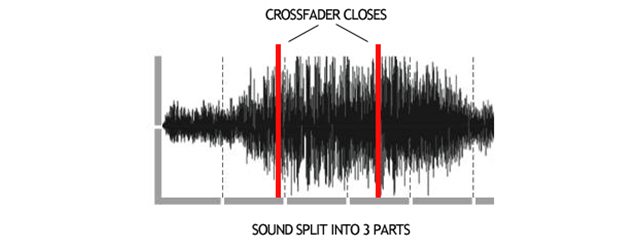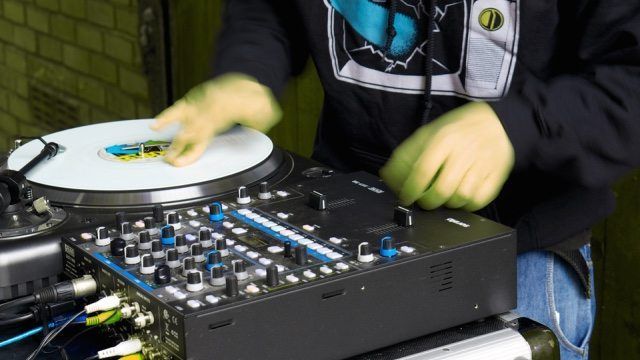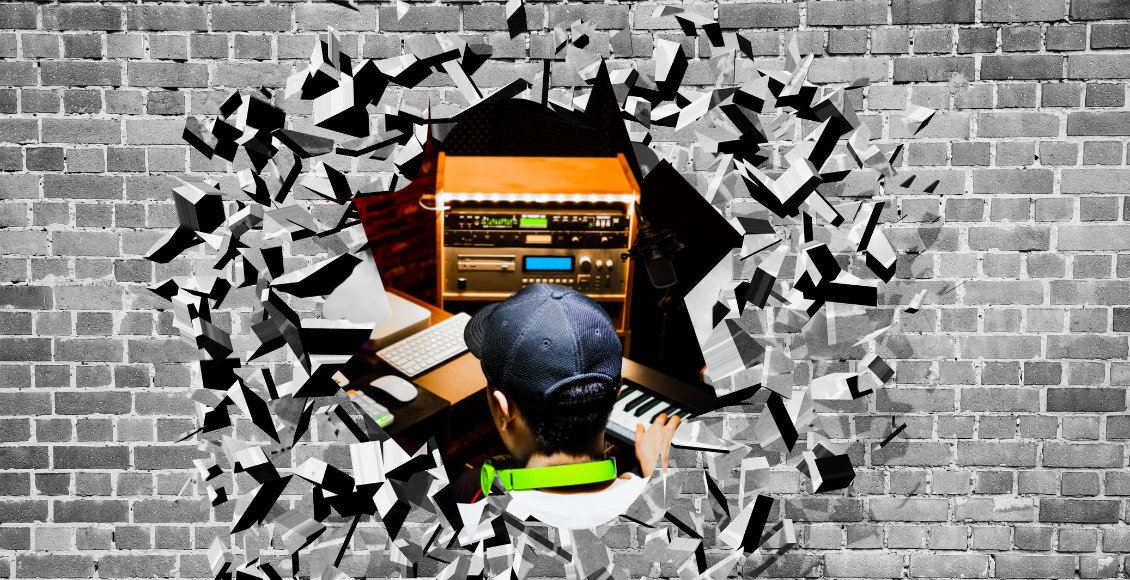It was 1998 in a club called the Unit in Sheffield, UK, when I first witnessed live scratching. Like many I was transfixed. I didn’t have a clue who the DJ was, but I remember how utterly amazing the noise sounded and how the fingers would move so fast they appeared to dance around the fader often in a ‘pinching’ motion. It was bemusing, fantastic, and mysterious all rolled into one.
Before the time of YouTube it took many years to understand why the hands and fingers moved the way they did. Partly by trial and error and partly by scanning a VHS tape of the 1998 DMC world championships and a Vestax Prime Cuts tutorial, I worked out that the key to it all was the ‘orbit’ scratch.
What is the Orbit Scratch?
The orbit was invented by DJ Disk, a member of the influential DJ crew Invisibl Skratch Picklz which also included DJ QBert and Mixmaster Mike, with the technique since becoming one of the bedrocks of the scratch DJ’s arsenal.
It is made up of two halves: first, with the crossfader open, the DJ moves the record forwards and at the same time closes the fader twice to chop the sound into three. If you do the same when you pull the record back, then you have six sounds.

It’s also known as the 2-click flare because the DJ closes the fader twice on the forwards motion and twice back – two clicks on each. It’s exactly the same as the 1-click flare but with an extra ‘click’. The advantage is that you are getting six sounds for the effort of only four clicks.
This might sound simple, but to do it at high speed is not. If you tried to grab the fader and move it rapidly with your whole forearm your muscles would tire very quickly and would most likely incur some sort of strain.
Instead, the fader is only gripped for one of the clicks. For the other click the hand opens, the wrist pivots, and the forefinger punches it to the other side. As the wrist pivots back, the thumb sends it the other way to close the sound off. This opening and closing of the hand creates the ‘pinching’ motion that is so fascinating to watch. To see this in action check out the video below of DJ Woody, filmed at 400 frames per second so you can see the movements.
For more DJ Woody, check out his interview focused on visual turntablism.
The correct terms for what the wrist is doing are pronating and supinating, according to Anthony Redmond, Professor of Clinical Biomechanics at Leeds University in the UK. When I asked him to analyze the above footage from a scientific point of view, he was surprised to see this motion, expecting mainly side-to-side movement – radial and ulnar deviation.

He said:
“This is consistent with two principles: (1) that fast movements require minimisation of inertia and so are done by the smallest segments and (2) that rotation is less susceptible to having to overcome inertia than translation (side-to-side).”
This means the speed is created by the fingers (the smallest segments) and then maintained by the hand/wrist rotation.
Firstly, because it is an open-fader scratch (ie. it begins and ends with the fader open) it can combine easily with other elemental open-fader techniques such as the 1-click flare and Jazzy Jeff’s chirp. This allows you to flow from one scratch technique to the next – so important to this improvisational artform.
Secondly, the two-click motion is the same as a number of other advanced scratches including the boomerang, aquaman, O.G. flare, and prism. All of these techniques require 2-clicks of the crossfader in the same rhythm, it’s the record movement alone that makes the difference between these sounds.
The orbit is one of the reasons scratching is so fascinating, but if you’re just starting out, make sure you get the basic techniques down first. As 2011 WTK world freestyle scratch champ DJ Chile says:
“The process is a lot like learning a new language, so if we first focus on understanding the most used words and phrases (baby motions, tears, chirps, transforms, 1 click flares, etc.), later on we can embed the more complex words into the basic sentence structures we understand well.”
Further Reading:
Adapted from Macho Zapp‘s immersive multimedia article on the fascination of scratching – read Scratch Obsession here









